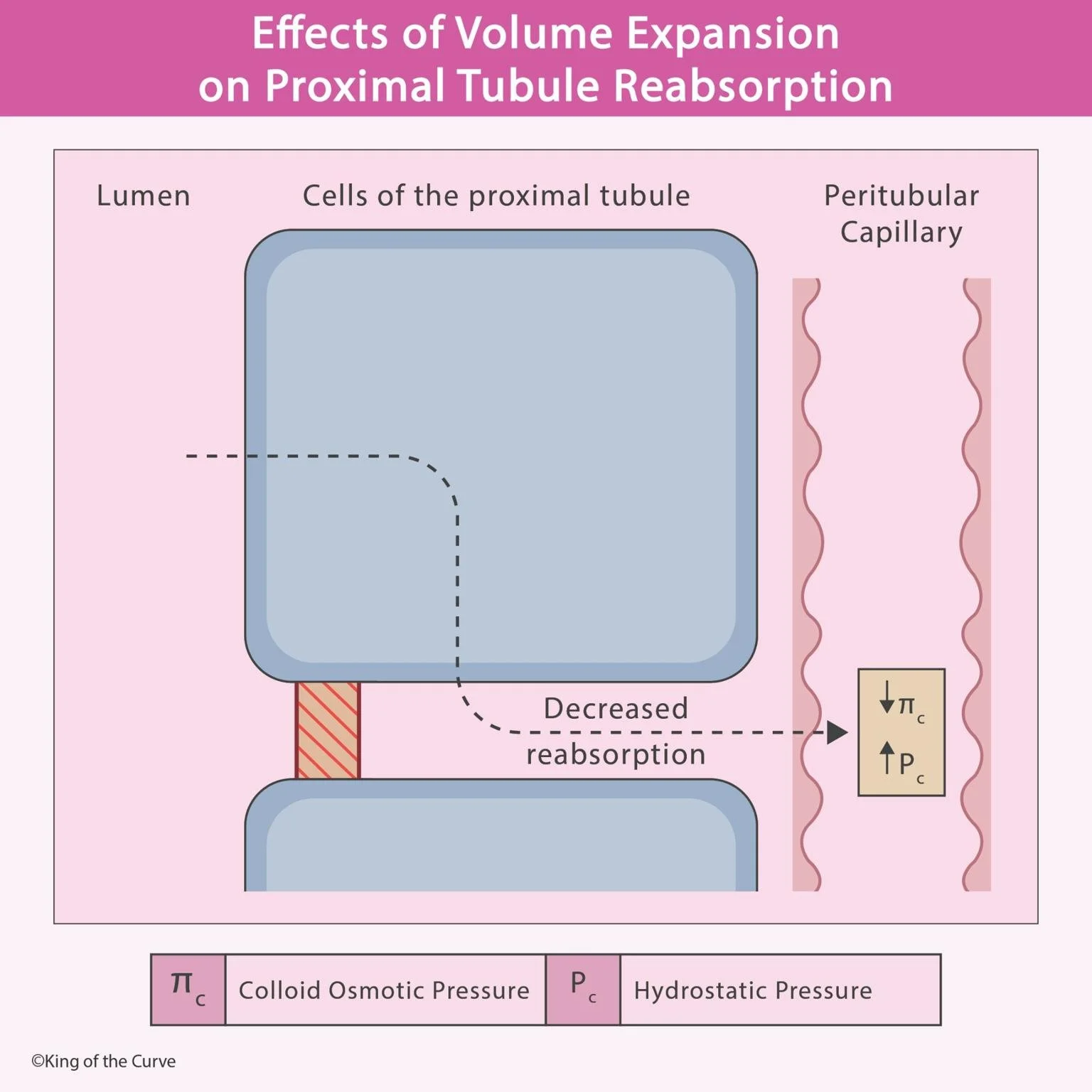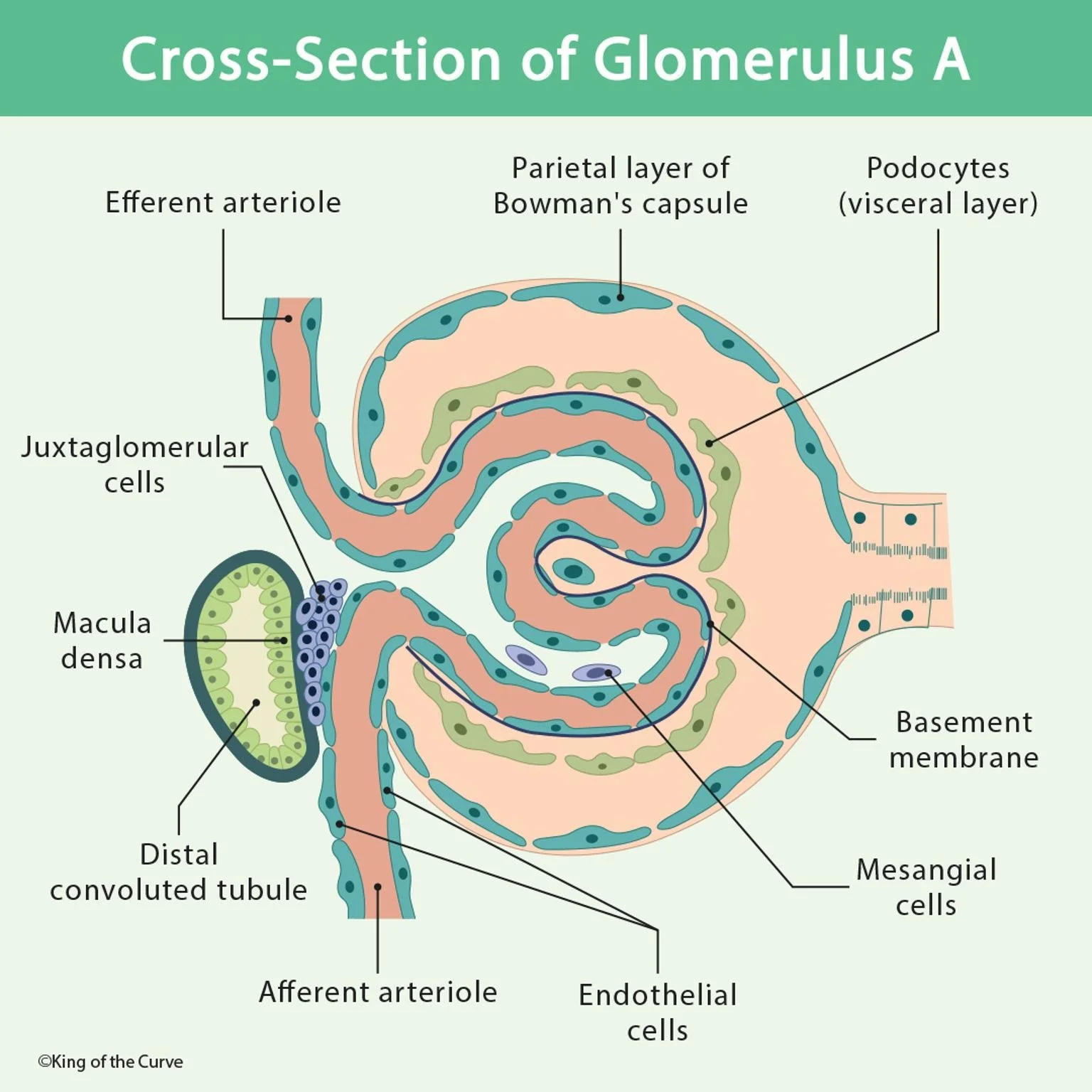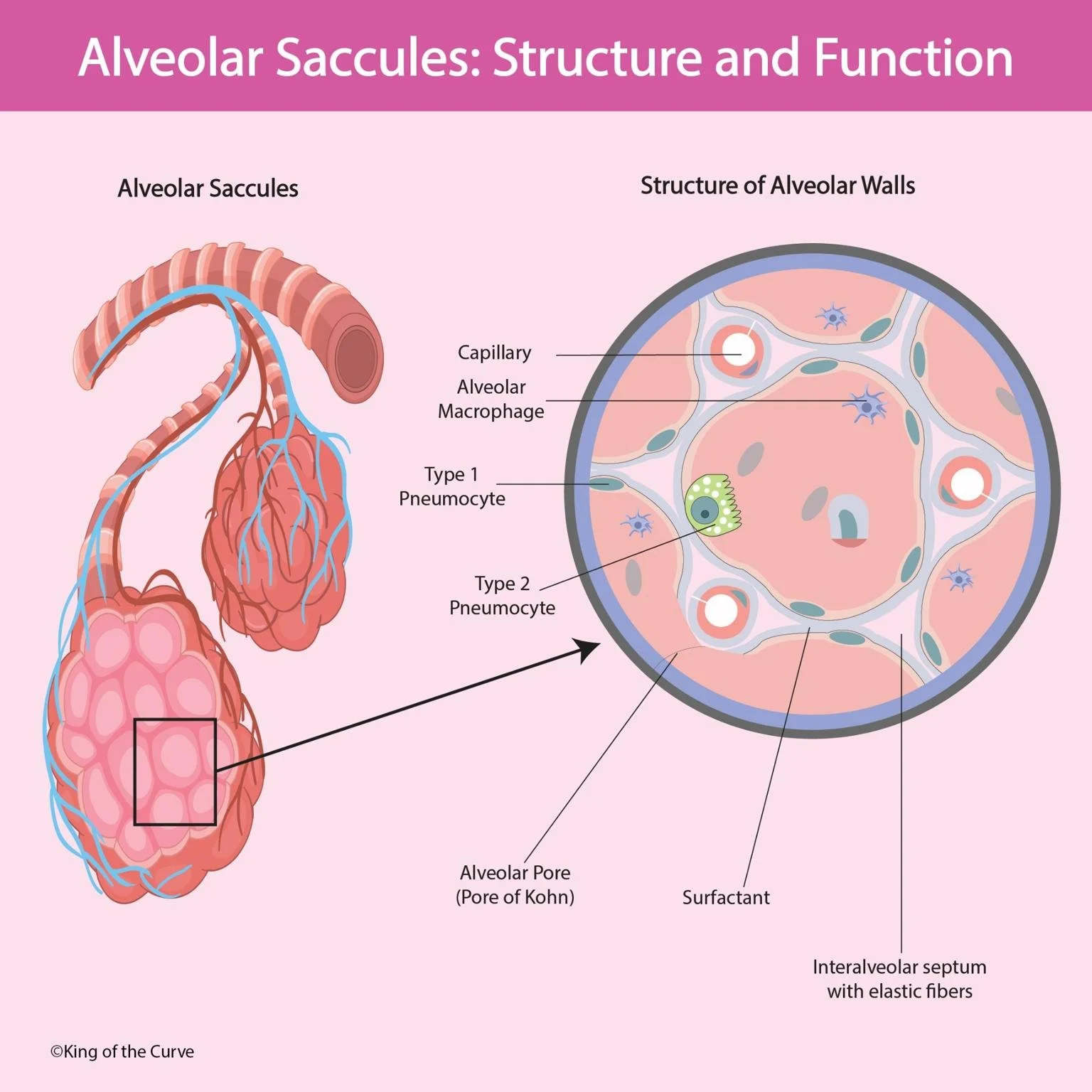
💧 Understanding Renal Blood Flow (RBF) Regulation for the MCAT
A high-yield breakdown of renal blood flow (RBF) autoregulation, including the myogenic response and tubuloglomerular feedback. Perfect for mastering MCAT renal physiology with a King of the Curve visual.

🧠 Understanding RAAS System Inhibitors for the MCAT
A high-yield breakdown of RAAS pathway inhibitors, including ACE inhibitors, ARBs, renin inhibitors, and aldosterone antagonists. Perfect for mastering MCAT cardiovascular and renal physiology with a King of the Curve visual.

🧠 Understanding Pyloric Stenosis for the MCAT
A high-yield explanation of pyloric stenosis, including anatomy, symptoms, electrolyte changes, and classic MCAT presentation. Features a King of the Curve visual to simplify this essential GI concept.

🔬 Understanding Proton Pump Inhibitors (PPIs) for the MCAT
A high-yield breakdown of how proton pump inhibitors (PPIs) work, including parietal cell ion transport, the H⁺/K⁺ ATPase pump, and regulatory signals. Perfect for MCAT physiology review with a King of the Curve visual.

🔬 Understanding GI Propulsion and Mixing for the MCAT
A high-yield explanation of GI propulsion and mixing, including roles of the mucosa, submucosa, muscularis, and enteric nervous system. Perfect for mastering MCAT physiology with help from a King of the Curve visual.

🧠 Overview of Glomerular Diseases
Explore the key differences between nephritic and nephrotic syndromes in this comprehensive overview of glomerular diseases. Learn about causes, pathology, and clinical features like hematuria, proteinuria, and hypertension.

💪 Myasthenia Gravis: When Nerves and Muscles Stop Communicating
Understand how Myasthenia Gravis disrupts communication between nerves and muscles. This King of the Curve visual explains the autoimmune destruction of acetylcholine receptors a key concept for MCAT and NCLEX physiology.

🧠 Muscle Composition of the Esophagus: How Your Body Moves Food Down
Understand how the upper and lower esophagus differ in muscle composition. Learn how striated and smooth muscles coordinate swallowing a high-yield concept for MCAT and NCLEX students. Simplified with a King of the Curve visual.

💧 Mechanisms of Reabsorption: How the Kidneys Fine-Tune Filtration
Learn how the kidneys filter, reabsorb, secrete, and excrete substances to maintain homeostasis. This King of the Curve visual explains nephron function and the equation “Excretion = Filtration Reabsorption + Secretion,” perfect for MCAT and NCLEX review.

🧫 Mechanisms of Gastric Acid Secretion: Understanding How Parietal Cells Regulate pH
Learn how gastric parietal cells regulate acid secretion through acetylcholine, gastrin, and histamine pathways and how drugs like omeprazole and cimetidine block acid production. A high-yield King of the Curve visual for MCAT and NCLEX prep.

🧬 Lymph Node: The Immune System’s Command Center
Discover how lymph nodes filter lymph, trap pathogens, and coordinate immune responses. Learn key regions cortex, paracortex, and medulla and their roles in defense. Perfect for MCAT, USMLE, and NCLEX prep with King of the Curve.

🧠 Internal View of the Duodenum: The Gateway of Digestion
Explore the anatomy of the duodenum — including the pyloric sphincter, circular folds, and major papilla — and learn its essential digestive functions.

🧠 Hepatic Circulation Pathway — What Flows Where
Understand portal triad to central vein flow, sinusoids, stellate & Kupffer cells, and zone 1–3 injury patterns. High-yield for MCAT & NCLEX.

🔎 Understanding Equipotential Lines in Electric Fields
Learn about equipotential lines in electric fields, including their properties, types (constant field, point charge, and dipole), and their role in electrostatics.

🔄 Enterohepatic Circulation of Bile Salts: A Vital Digestive Cycle
Learn the enterohepatic circulation of bile salts, their recycling, CCK action, and clinical importance for fat digestion and vitamin absorption.

🩺 Effects of Volume Expansion on Proximal Tubule Reabsorption
Learn how volume expansion alters proximal tubule reabsorption through changes in colloid osmotic and hydrostatic pressures.

🩺 Understanding the Cross-Section of Glomerulus A
Learn the anatomy and function of the glomerulus with a detailed cross-section diagram. Explore podocytes, Bowman’s capsule, basement membrane, and key filtration steps in kidney histology.

🧠 Anatomy of the Nephron: The Kidney’s Filtration Master
Explore the detailed anatomy of the nephron, the kidney’s essential filtration unit. Learn about glomerulus, tubules, and their role in fluid balance and waste removal.

🌬️ Alveolar Saccules: The Microscopic Air Sacs That Power Your Lungs – MCAT Edition
Master alveolar anatomy and surfactant function with a KOTC MCAT visual. Learn about pneumocytes, macrophages, and diffusion with ease.

💧 Countercurrent Mechanism: How the Nephron Concentrates Urine (Made Simple)
Learn how the nephron’s countercurrent multiplier and exchanger concentrate urine. Includes visual breakdowns and Step 1-style integration for renal physiology.
